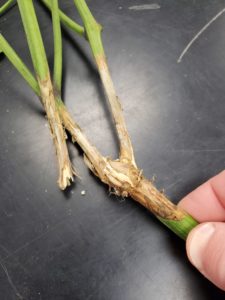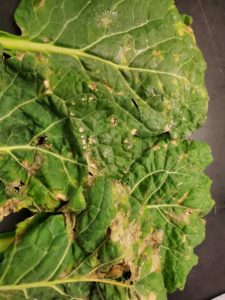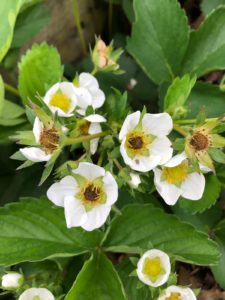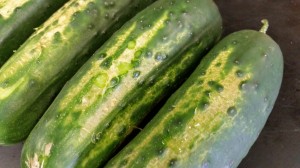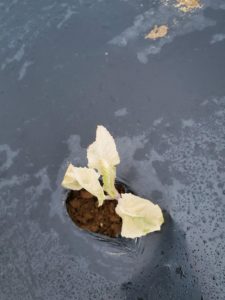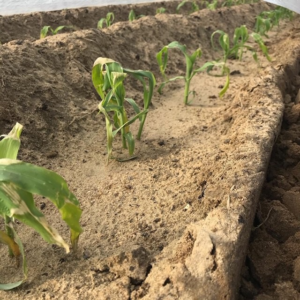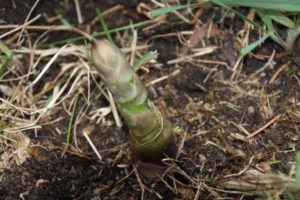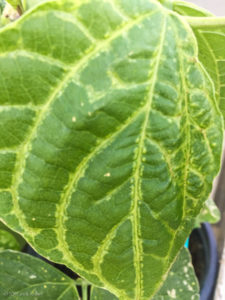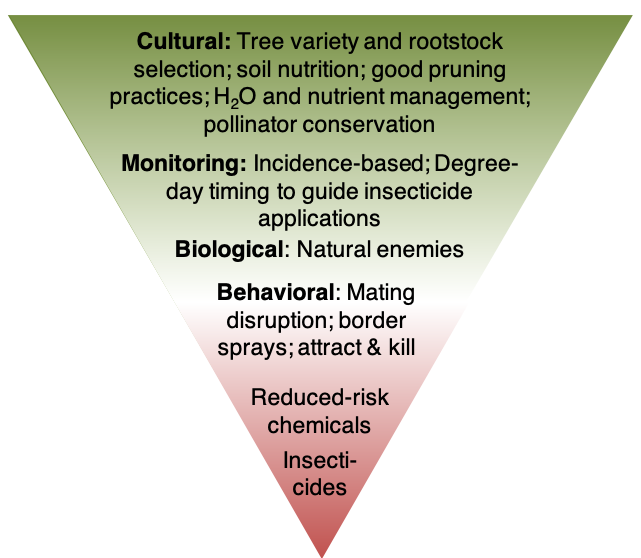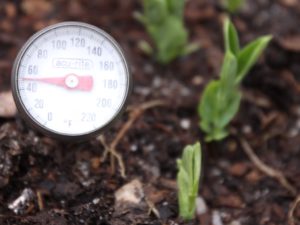 This season’s warm March made it tempting to get an early start planting crops. However to give plants a jump on the season, resist the lure of warm air temperatures. Instead, pay more attention to your soils’ temperatures.
This season’s warm March made it tempting to get an early start planting crops. However to give plants a jump on the season, resist the lure of warm air temperatures. Instead, pay more attention to your soils’ temperatures.
One might think the warmer March, not to mention the very mild January and February, and even this past weekend’s 70°F, would mean warmer soil temperatures by now than when retired colleague Ray Samulis originally wrote most of this post in 2014. Ray discussed recording 56-58°F temperatures from soils in various Central Jersey commercial vegetable fields on April 15 just before a multi-day cold front arrived. He had anticipated colder temperatures. Today, expecting higher temperatures, a quick sampling revealed soils nearly ten degrees cooler (48-52°F) than what Ray had measured.
What do soil temperatures have to do with your early vegetable seedlings?
- Mean spring soil temperatures determine nutrient availability, especially phosphorus which is closely related to early root growth, as well as nitrogen, hence, overall crop development.
- Knowing your earlier warming ‘hot’ fields can be reliable planting spots for cold tolerant vegetables, but monitoring the temperatures is the only way to know for sure. Germination temperature requirements for common vegetables are listed in the table below.
- Many of the same techniques (raised beds, clear plastic mulch, floating row cover, windbreaks) used to protect early warm season transplanted crops can also be used to warm the soil to give a boost to early direct seeded crops.
When it is sunny or when the wind is howling, judging the suitability for planting may seem clear. However, monitoring field specific soil temperatures and paying close attention to crop varietal cold tolerance (published by most seed companies) are better guides. Besides a soil thermometer, there are now many relatively inexpensive weather monitoring systems (from dataloggers that monitor individual parameters like soil temperature, to complete systems that will measure air and soil temps, wind speed, rainfall, and more – more on those in another post) that can be observed directly or can be linked to smart phones/devices and/or office computers miles away.
 While it’s best to measure soil temperatures in your own fields, there are also online soil temperature reporting alternatives like the Rutgers NJ Weather Network. Twelve weather stations offer real time soil temperatures. Check the numbered station nearest your fields and bookmark the station. Syngenta GreenCast also offers broad regional soil temperature maps, with a 5-day soil prediction forecast feature, or you can put in your town and zip code for a local average (see figure 1). This is useful data when weather conditions are less than favorable and only narrow planting windows exist.
While it’s best to measure soil temperatures in your own fields, there are also online soil temperature reporting alternatives like the Rutgers NJ Weather Network. Twelve weather stations offer real time soil temperatures. Check the numbered station nearest your fields and bookmark the station. Syngenta GreenCast also offers broad regional soil temperature maps, with a 5-day soil prediction forecast feature, or you can put in your town and zip code for a local average (see figure 1). This is useful data when weather conditions are less than favorable and only narrow planting windows exist.
These temperatures represent vegetable seedling survival tolerance, not necessarily best performance:
| Average Minimum Spring Soil Temperatures |
Vegetable Crop Tolerance for Reliable Germination |
| 40°F | Beet, Cabbage, Potato, Spinach, Turnip |
| 45°F | Pea, Mustard, Leek |
| 50°F | Carrot, Lettuce, Onion, Sweet Corn |
| 60°F and above | Bean, Cucumber, Pumpkin, Squash |
| 70°F and above | Eggplant, Watermelon |

